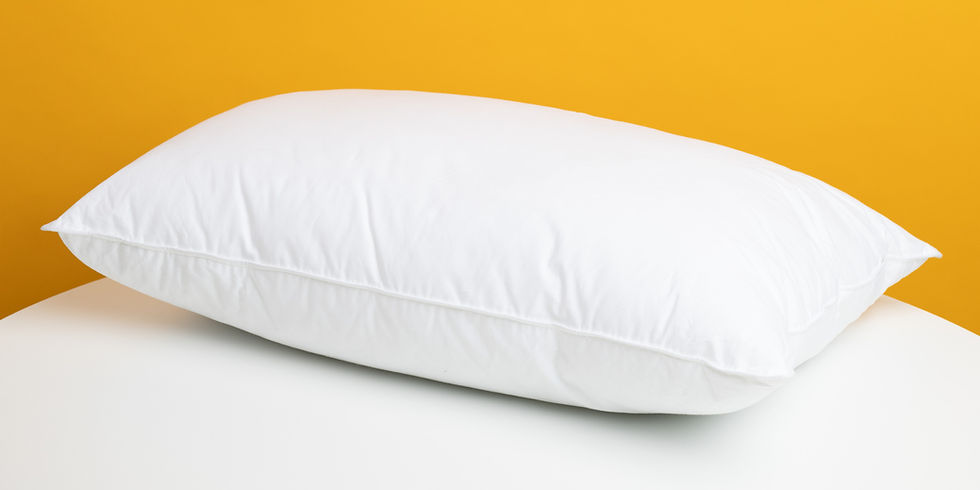The Smart Way to Store Pillows ✨
- Riley Thorne

- Sep 16
- 3 min read
Pillows are one of those deceptively tricky items in the home.
They’re light, soft, and seemingly easy to toss anywhere. Correct storage isn’t just about keeping your home neat—it’s about protecting the fabric, the filling, and the investment you’ve made in quality bedding.

Why Proper Pillow Storage Matters
Pillows are built to cradle, not to withstand crushing. When they’re stuffed into a closet corner or left in a damp basement bin, they flatten, gather dust, and sometimes even develop mold or mildew. Improper storage shortens their lifespan dramatically. A down pillow that should last years can lose its loft in a single season of poor handling. Synthetic pillows risk clumping; memory foam can crack or warp if bent in half.
“Think of pillows as textiles with a job to do. Store them wrong, and they can’t perform. Store them right, and they feel brand new every time you bring them out.”
Methods That Work in Homes
1. Under-Bed Storage
If you’re short on closet space, sliding pillows under the bed is one of the most practical solutions. Use zippered fabric under-bed bags with a clear top (so you can see what’s inside) rather than cheap plastic bags. Fabric allows airflow and prevents the “sweaty plastic smell” that sometimes transfers to bedding.
2. Closet Shelving With Dividers
Closets work best if you treat them like store displays: flat, folded, and separated. Shelf dividers or cubbies keep each pillow in its own lane, preventing them from slumping into one another. This is especially useful for decorative throw pillows that can lose shape quickly.
3. Breathable Storage Bags
Vacuum-seal bags are popular, but they’re not always kind to pillows. For down and feather fills especially, compression can break delicate quills. Instead, breathable cotton storage bags protect against dust while letting fibers expand naturally. Look for ones labeled “for bedding” with a sturdy zipper.
4. Cedar Chests or Decorative Trunks
If you have the space, an old-school cedar chest doubles as décor and long-term storage. The natural oils in cedar repel moths and insects, and the solid wood protects against crushing. It’s a smart investment if you cycle through seasonal bedding.
5. Seasonal Rotation Bins
For families with multiple sets—summer vs. winter pillows, guest pillows, decorative holiday pillows—clear, stackable bins with locking lids make rotation painless. Label them by season and store on high shelves. Just make sure to add a fabric liner or slip each pillow into a cotton case before sealing to prevent static and condensation.
A Final Thought
The secret to pillow storage isn’t complicated: treat them like clothing, not clutter. Keep them clean, dry, and breathable. Rotate them by season. And above all, resist the urge to shove them wherever there’s space.
Your pillows will last longer, your home will feel calmer, and you won’t face the dreaded linen closet avalanche again.
FAQ
How should I store pillows long-term? Use breathable cotton storage bags or pillowcases to protect against dust and moisture—avoid vacuum-sealing for down or feather fills.
Can I store pillows in plastic bins? Yes, but line them with fabric covers or pillowcases first to prevent condensation and static.
Is it safe to vacuum-seal pillows? Only for short-term storage of synthetic pillows; never for down or memory foam, as compression ruins their structure.
Where’s the best place to keep extra pillows? Under the bed in zippered fabric bags, on divided closet shelves, or in a cedar chest—dry, cool spots are best.
Do pillows need to breathe in storage? Absolutely. Airflow keeps fillings resilient and prevents odors or mildew.



Comments